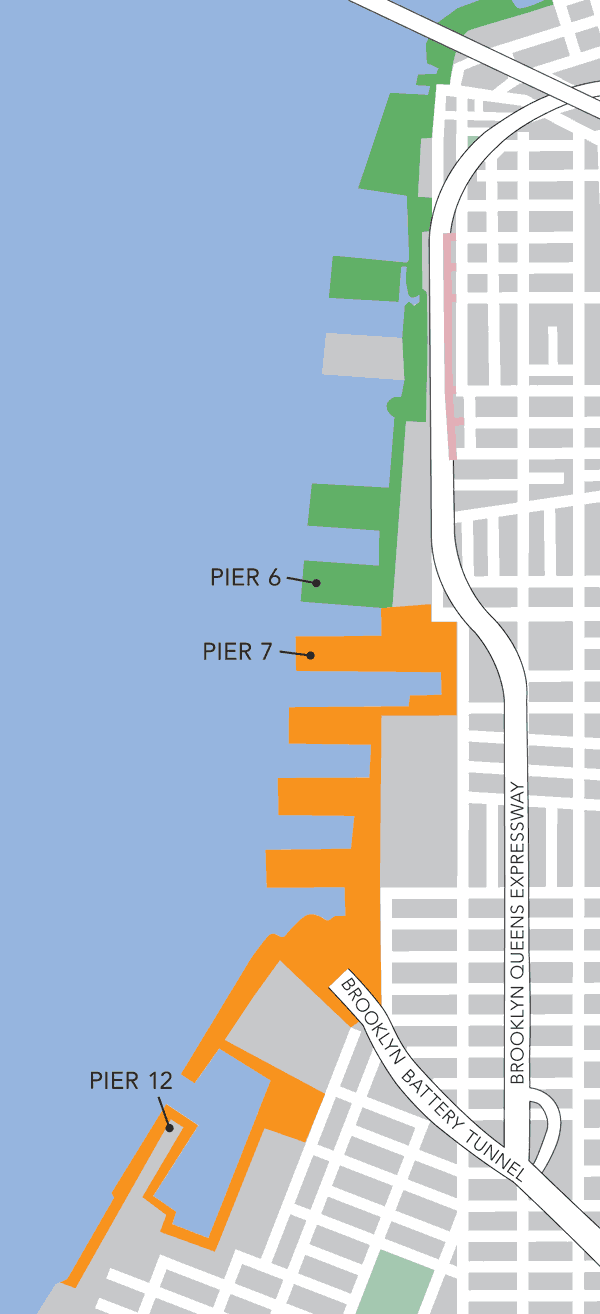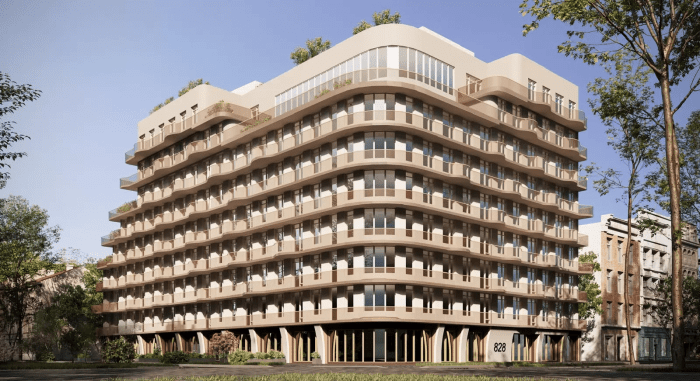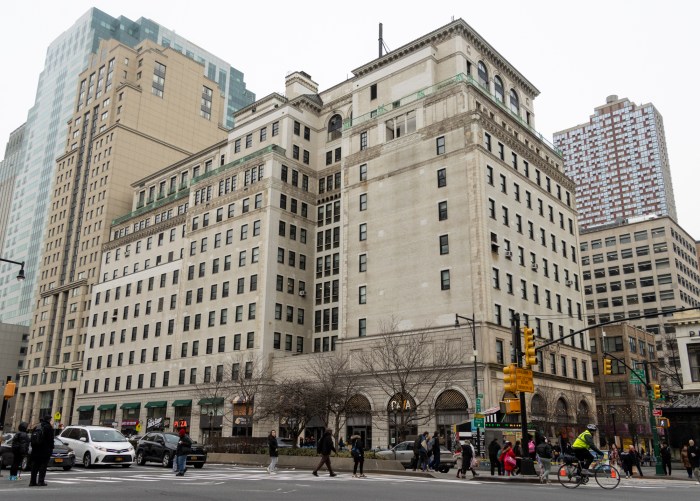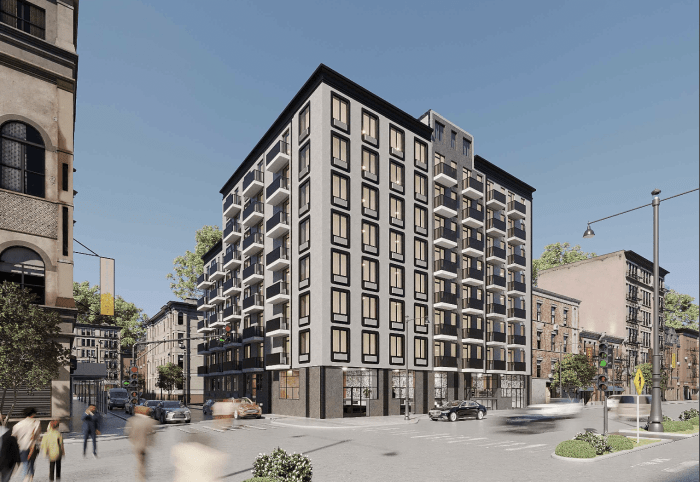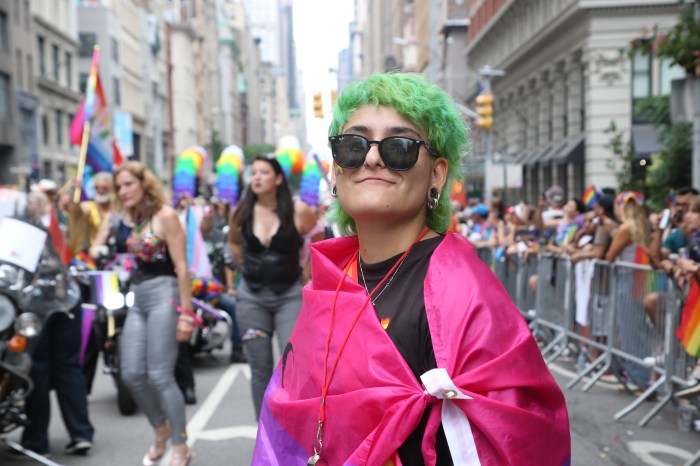It’s Brooklyn Bridge Park 2.0!
Gov. Cuomo’s call to develop Red Hook by kicking out a shipping terminal and bringing a new subway stop could double the size of Brooklyn’s Front Yard, engineers pushing a similar plan for the nabe told The Brooklyn Paper.
California-based AECOM’s proposal would transform the Port Authority-owned piers currently occupied by the Red Hook Container and Brooklyn Cruise terminals — a massive port that runs from Atlantic Avenue to Clinton Wharf — into a sprawling grassy meadow called the “Fields at Columbia Piers” that would connect to Brooklyn Bridge Park, an executive at the company said.
“You would basically bring the whole topology of Piers 1 to 6 and recreate that same kind of park atmosphere down from Piers 7 to 12,” said Chris Ward, who previously served as an executive director at the state-run Port Authority of New York and New Jersey. “And really have that waterfront park expanded with luxury housing built on top of the raised platform.”
AECOM execs, who recently opened a Sunset Park office, initially pitched their idea to extend the 1 train from Manhattan to Red Hook and build massive high-rises in the superstorm-Sandy ravaged nabe in 2016.
And the proposal’s viability is gaining steam in the wake of Cuomo’s Jan. 3 State of the State speech, in which he asked honchos at the Port Authority and the Metropolitan Transportation Authority to look into building an underwater Red Hook-to-Manhattan subway tunnel and shipping the nabe’s maritime operation down to Sunset Park to free its piers for potential development.
Ward envisions three stops for Red Hook’s new subway: one on the current container-terminal site, another near the Red Hook Houses public-housing complex, and a third adjacent to the F- and G-train station at Fourth Avenue and Ninth Street.
He estimated that expanding the infrastructure would cost about $4 billion, and said revenue generated from developing the waterfront would foot the bill.
But Ward’s vision for a Red Hook with new subway stations and an expanded Brooklyn Bridge Park is currently little more than a pipe dream, he said, as it would take years for any work to begin and would first require a rezoning.
“This is just the beginning. There’s a tremendous amount of work that would need to be done, plus cooperation between state and city,” Ward said. “The political complexity between city and state exceeds my capacity, all I’m saying is that someone’s going to have deal with it and I think the governor, to his credit, recognizes that at least.”
And a rezoning isn’t in the cards for the neighborhood, according to Mayor DeBlasio, who told concerned residents at a December town hall that he didn’t anticipate such a change happening in the near future.
“There’s no vision of rezoning that would allow for more zoning than could happen right now in this community,” Hizzoner said.
But development in Brooklyn Bridge Park — which is jointly run by the city and the semi-private Brooklyn Bridge Park Corporation — is mandated by the park’s independent General Project Plan, which trumps local zoning laws and permits construction in the green space only to generate revenue needed by it.
Development in the current park is at capacity, however, and a green-space spokeswoman said she can’t speculate on what would happen in a possible expansion.
“Brooklyn Bridge Park is currently 90 percent complete or under construction. We are focused on completing the park as designed, and maintaining and operating a world-class park that stretches 85 acres from John Street in Dumbo to Pier 6,” said Sarah Krauss. “We understand there are various ideas about the future of the Brooklyn waterfront, and cannot speculate on conceptual plans or what they might mean for the area at this time.”
AECOM’s Brooklyn outpost joins its five already-open offices on the distant isle of Manhattan, and comes amid the engineering firm’s work on other local infrastructure projects, including a possible expansion of the Brooklyn Bridge’s pedestrian promenade and the reconstruction of the Brooklyn–Queens Expressway’s triple cantilever in Brooklyn Heights.
The firm also worked with the city on a controversial environmental study of a toxic site officials plan to build a Coney Island homeless shelter on, which activists blasted as inaccurate, and assisted in the construction of Manhattan’s Second Avenue subway line.
